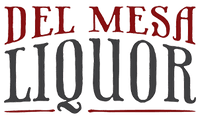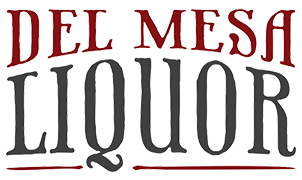If you're a wine lover, you know how important a wine label can be. The label not only catches your eye, but it also tells a story about the wine inside. Some labels have become iconic, synonymous with quality and sophistication. These labels have become a part of the wine industry's history and continue to be used today.
In this blog post, we'll explore some of the most recognizable wine labels in the world and the stories behind them. From the elegant simplicity of the Pinot Noir label to the sophistication of the Champagne label, these designs are more than just pretty pictures.
They represent the history and tradition of the wine industry and the passion and dedication of the winemakers who create these beloved wines. So the next time you're browsing the shelves of your local alcohol store, take a closer look at the labels on the bottles. You never know what fascinating story you may discover.
Pinot Noir
Pinot Noir is a red wine known for its delicate flavor and difficult growing conditions. It's a wine that requires a specific climate and soil to thrive, which makes it a bit of a diva in the wine world. But despite its demanding nature, Pinot Noir has become one of the most popular wines in the world, and its label is instantly recognizable.

Image: Freepik
The label for Pinot Noir features a grape cluster with leaves on either side. This simple design has become synonymous with wine, and it's easy to see why. The label is elegant and timeless, much like the wine itself. But where did this iconic label come from?
The design of the Pinot Noir label was created by a French winemaker named André Tchelistcheff. Tchelistcheff was known as the "Dean of American Winemakers," He was instrumental in bringing Pinot Noir to California. He designed the label in the 1940s, and it's been used ever since. Today, you can find the Pinot Noir label on bottles from around the world, and it's a symbol of quality and refinement.
Chardonnay
Chardonnay is a white wine that's beloved for its versatility. It can be oaked or unoaked, and it can be made in various styles. It's a wine enjoyed by both novice and experienced wine drinkers, and its label is one of the most recognizable in the world.

Image: Freepik
The label for Chardonnay features a grapevine with a cluster of grapes on either side. The design is simple but elegant, becoming synonymous with wine. But where did this iconic label come from?
The design of the Chardonnay label was created by a French winemaker named Paul Masson. Masson was a pioneer in the California wine industry, and he's credited with bringing Chardonnay to the United States. He designed the label in the 1930s, and it's been used ever since. Today, you can find the Chardonnay label on bottles from around the world, and it's a symbol of quality and versatility.
Chianti
Italy is famous for its wine, and Chianti is one of its most beloved varieties. This red wine from Tuscany is made primarily from the Sangiovese grape, and its labels reflect the region's rich history and culture. The most iconic Chianti label is that of Ruffino.
Ruffino has been producing wine since 1877, and its label has remained largely unchanged for over a century. It features the company's name in bold letters, surrounded by a crest of the Medici family. The Medici was one of the most powerful families in Tuscany during the Renaissance, and their crest is a nod to the region's artistic and cultural heritage.
Cabernet Sauvignon
Cabernet Sauvignon is a red wine that's known for its bold flavor and high tannins. It's a wine that connoisseurs and novices love, and its label is instantly recognizable.
The label for Cabernet Sauvignon features a simple design with the name of the wine in bold letters. It's a straightforward label that doesn't rely on frills or gimmicks, and it's become synonymous with the wine.
The design of the Cabernet Sauvignon label is a bit of a mystery. No one knows who first came up with the design or where it originated. But despite its mysterious origins, the label has become a symbol of quality and strength. Today, you can find the Cabernet Sauvignon label on bottles from around the world, and it's a favorite among wine enthusiasts.

Image: Freepik
Champagne
Champagne is a sparkling wine that's synonymous with celebration and luxury. It's a wine enjoyed worldwide, and its label is one of the most recognizable in the wine industry. The label for Champagne features a simple but elegant design with the name of the producer and the type of Champagne prominently displayed.
The design of the Champagne label can be traced back to the 19th century. In 1850, the Champagne house Moët & Chandon commissioned a label that would reflect the elegance and sophistication of their wines. The label they chose featured a simple black-and-white design with the name of the producer and the type of Champagne. This design was a departure from the ornate labels that were popular at the time, but it proved to be a hit with consumers.
Over time, other Champagne producers began to adopt this simple design for their own labels. Today, the Champagne label is instantly recognizable and symbolizes luxury and celebration. Whether you're toasting a special occasion or enjoying a glass of bubbly, the Champagne label reminds you of the history and tradition behind this iconic wine.
Final Thoughts
In conclusion, walking into an alcohol store can be a daunting experience, with so many wines vying for attention. But some labels stand out above the rest. These iconic wines, from Chianti to Champagne, are more than just bottles on a shelf.
They represent a region's history, culture, and winemaking traditions.From the simplicity of Chardonnay's label to the glamor of Pinot Noir, these wines tell a story with every sip. Whether you're celebrating a special occasion or simply enjoying a glass with friends, the most iconic wine labels in the world are sure to leave a lasting impression.
So the next time you find yourself browsing the shelves of an alcohol store, take a closer look at the labels. You might just discover a new favorite wine with a story worth telling.
 Log in
Log in
 My Wishlist
My Wishlist Reward Program
Reward Program Corporate Gifts
Corporate Gifts Customer Help
Customer Help


